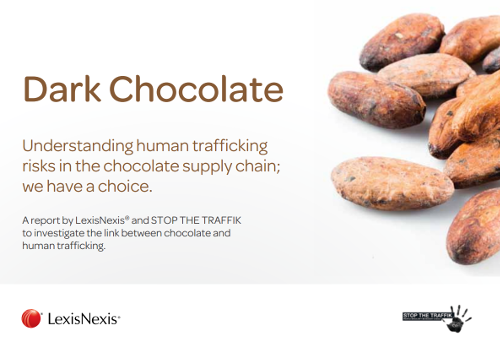The economic crises seems blinding the governments and major economic actors toward environmental troubles. Nevertheless, the impacts of population growth and economic expansion have now the potential to disrupt important regulatory functions of global ecological systems. Green growth involves transforming the production and consumption processes in order to maintain or restore these regulatory functions of the planet's natural capital. It requires that environmental facto rs be treated as an essential factor of production and not merely an externality.
This 2013 report investigates the link between chocolate and human trafficking. It demonstrates how Supply Chain and Procurement Directors can better understand the risk of human trafficking in their supply chain by analysing media coverage. The insights into the chocolate trade and its links to human trafficking contributes to the advancement of SDG target 8.7 to eradicate forced labour, end modern slavery and human trafficking by 2025.


